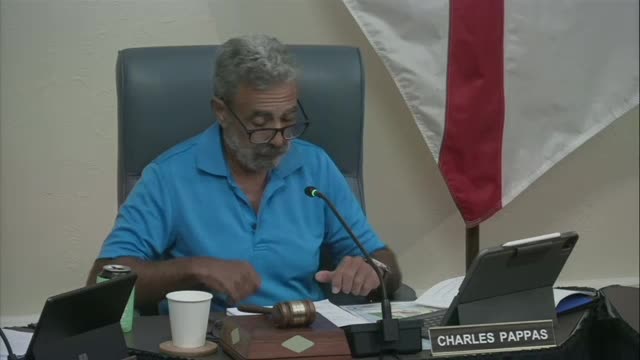New development sparks fierce debate over flood risks
July 02, 2024 | St. Augustine, St. Johns County , Florida

This article was created by AI summarizing key points discussed. AI makes mistakes, so for full details and context, please refer to the video of the full meeting. Please report any errors so we can fix them. Report an error »

In a recent government meeting, city officials discussed significant changes to the Planning and Zoning Board (PZB) staff report regarding conservation overlay zone development requests. Senior planner Sarah Daugherty outlined these changes aimed at enhancing the board's ability to evaluate proposals effectively, particularly in light of increasing concerns about flood mitigation and environmental resilience.
The revised staff report now includes a new ranking system for conservation overlay zone development projects, which assesses 17 criteria related to site-specific conditions, the relationship to adjacent properties, and potential impacts on floodplains and shorelines. This system is designed to provide a clearer comparison between proposed developments and existing site conditions, facilitating more informed decision-making by the board.
Daugherty highlighted that the changes also involve relocating maps to a new attachment section for better visibility and adding new maps, including those showing adjacent uses, flood zones, and elevation. The ranking system scores projects from 0 to 16, with higher scores indicating greater potential impacts on floodplains and shorelines.
The meeting also featured a specific application for a single-family home on Avery Street, which has raised concerns among local residents. The proposed development would extend the roadway and involve the removal of significant trees within conservation zones. Residents expressed worries about flooding, the adequacy of the existing sewer system, and the environmental impact of tree removal.
Public comments revealed a strong opposition to the project, with many residents citing past flooding issues and the potential for increased impervious surfaces exacerbating drainage problems. Concerns were raised about the safety of building in a flood-prone area, with several speakers advocating for the preservation of the natural landscape and questioning the necessity of the proposed development.
As the board continues to evaluate the application, the community remains engaged, emphasizing the importance of considering cumulative impacts and the long-term sustainability of the area. The discussions reflect a growing awareness of the need for careful planning in the face of environmental challenges, particularly in coastal regions vulnerable to flooding and climate change.
The revised staff report now includes a new ranking system for conservation overlay zone development projects, which assesses 17 criteria related to site-specific conditions, the relationship to adjacent properties, and potential impacts on floodplains and shorelines. This system is designed to provide a clearer comparison between proposed developments and existing site conditions, facilitating more informed decision-making by the board.
Daugherty highlighted that the changes also involve relocating maps to a new attachment section for better visibility and adding new maps, including those showing adjacent uses, flood zones, and elevation. The ranking system scores projects from 0 to 16, with higher scores indicating greater potential impacts on floodplains and shorelines.
The meeting also featured a specific application for a single-family home on Avery Street, which has raised concerns among local residents. The proposed development would extend the roadway and involve the removal of significant trees within conservation zones. Residents expressed worries about flooding, the adequacy of the existing sewer system, and the environmental impact of tree removal.
Public comments revealed a strong opposition to the project, with many residents citing past flooding issues and the potential for increased impervious surfaces exacerbating drainage problems. Concerns were raised about the safety of building in a flood-prone area, with several speakers advocating for the preservation of the natural landscape and questioning the necessity of the proposed development.
As the board continues to evaluate the application, the community remains engaged, emphasizing the importance of considering cumulative impacts and the long-term sustainability of the area. The discussions reflect a growing awareness of the need for careful planning in the face of environmental challenges, particularly in coastal regions vulnerable to flooding and climate change.
View full meeting
This article is based on a recent meeting—watch the full video and explore the complete transcript for deeper insights into the discussion.
View full meeting